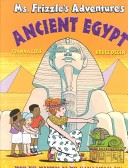
Ms. Frizzle and her tour group are transported to ancient Egypt, where they learn about the pyramids, mummification, flooding of the Nile, and other aspects of life in Egypt long ago.

Ms. Frizzle and her tour group are transported to ancient Egypt, where they learn about the pyramids, mummification, flooding of the Nile, and other aspects of life in Egypt long ago.
 In 1997, Ted and Betsy Lewin trekked into the Impenetrable Forest in Uganda to see mountain gorillas in the wild. This real-life adventure story is the amazing saga of that trip. At moments funny, exhausting, educational, and enlightening, Gorilla Walk is filled with the wonder of nature in general–and of this magnificent animal in particular.Notable Children’s Trade Books in the Field of Social Studies 2000, National Council for SS & Child. Book Council, 2000 Notable Children’s Books (ALA), and Outstanding Science Trade Books for Children 2000–selected by Natn’l Science Tchrs Assoc. & Child. Bk Cncl.
In 1997, Ted and Betsy Lewin trekked into the Impenetrable Forest in Uganda to see mountain gorillas in the wild. This real-life adventure story is the amazing saga of that trip. At moments funny, exhausting, educational, and enlightening, Gorilla Walk is filled with the wonder of nature in general–and of this magnificent animal in particular.Notable Children’s Trade Books in the Field of Social Studies 2000, National Council for SS & Child. Book Council, 2000 Notable Children’s Books (ALA), and Outstanding Science Trade Books for Children 2000–selected by Natn’l Science Tchrs Assoc. & Child. Bk Cncl.
Simu, a young white rhinoceros, gets lost while playing on the African plains, but is rescued by his mother and aunt.
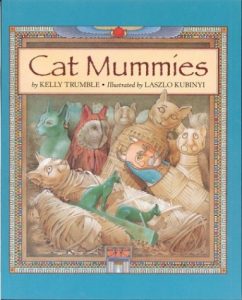 Clearly written text offers an answer to the question of why ancient Egyptians mummified thousands and thousands of cats. An easy-to-understand introduction to ancient Egyptian history. “Extensive research is evident in the many original sources quoted and the lengthy bibliography. . . . Kubinyi’s soft-focus watercolors work well to explain and break up the text.” — School Library Journal
Clearly written text offers an answer to the question of why ancient Egyptians mummified thousands and thousands of cats. An easy-to-understand introduction to ancient Egyptian history. “Extensive research is evident in the many original sources quoted and the lengthy bibliography. . . . Kubinyi’s soft-focus watercolors work well to explain and break up the text.” — School Library Journal
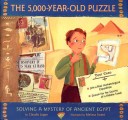
An account of Dr. George Reisner’s 1925 discovery and excavation of a secret tomb in Giza, Egypt, based on archival documents and records, but told through the fictionalized experiences of a young boy who accompanies his father on the dig.

Gary the gorilla is the only animal in the jungle who is lonely — all the other animals seem to have companions — and even the people of the village are frightened of him so they stay well away. But Gary has nightmares that hunters catch him, and he wishes that everyone could see how lonely and afraid he is. Then one day a tiny sunbird hamed Ray thinks he looks so sad that he ventures to talk to him. Soon this unlikely pair are best of friends, but Ray has a family and Gary can’t help wishing for one too. Then one day Ray doesn’t show up as usual, only to return days later with a wonderful surprise for Gary. In this delightful story of friendship, Ray’s resourcefulness in support of his fearsome friend has a touching and satisfying ending.
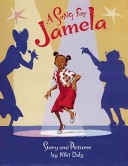
The summer holidays are here and Jamela is bored as a girl can be! All she can think about is the Afro-Idols TV final, so when she lands a job at Divine Braids hair salon, she can’t believe her eyes when Afro-Idols celebrity Miss Bambi Chaka Chaka arrives at the salon to be coiffed. But while Jamela’s idol dozes and Aunt Beauty designs her starry hairdo, a buzzy fly appears on the scene and threatens to ruin everything.
See the review at WOW Review, Volume 5, Issue 3.
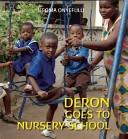
Deron Goes to Nusery School is a title in the First Experiences series, a vivid new series portraying young children’s very first experiences of nursery school, time with grandparents, and other events. The first time for anything can be daunting, and these books set out to familiarize children, through simple read-aloud words and beautiful photos, with what seems at first unfamiliar but will eventually become a routine part of everyday life. Set in and photographed in Ghana in West Africa, these beautiful books brilliantly capture these universal early childhood experiences from the relatively unusual and revealing perspective of a country in the developing world. In Deron Goes to Nusery School, Deron watches his mother make his new school clothes. The next day he goes with her to the school and meets his new teacher, who shows him around the school and introduces him to the other children. Playing, singing, writing, eating lunch, resting, and listening to a story are all part of Deron’s exciting first day, and at the end he can’t wait to go back tomorrow. Written and photographed by an award-winning author, this is a uniquely heart-warming book to share with all young children.

In Grandma Comes to Stay, three-year-old Stephanie helps her mother tidy up, go shopping at the market, and cook in preparation for Grandma’s stay. When she arrives, Grandma gives Stephanie a box of pencils and reads her favorite book. The next day she shows Stephanie how to tie a head-dress, and Stephanie shows Grandma how to kick a ball, play with dolls, and bang a drum. At bedtime Grandma tells her a wonderful story, and when Grandma leaves the next morning Stephanie says, “Come back soon, Grandma!” Written and photographed by an award-winning author, this is a uniquely heartwarming book to share with all young children.

Fans of true dog stories, Jack Russell terriers, and African wildlife will want to check outBulu! Born on a crocodile farm in Zambia’s untamed South Luangwa Valley, the puppy seemed different from his littermates. Too quiet. Unresponsive. Terriers are usually full of energy and bouncing off walls. But not this one. Nobody wanted him. Enter Anna and Steve Tolan-former police officers who had left behind their life in England to live in the African bush. People thought the Tolans were a bit different, too. The peculiar puppy suited them perfectly. They named him Bulu, or “wild dog” in the local Nyanja language. Living in the bush, Bulu not only found his voice, he also found his calling as a foster parent to the orphaned baby animals-including warthogs, monkeys, elephants, baboons, bushbucks, and buffalo-cared for by the Tolans. But Bulu’s protective nature led him into terrifying situations in the wild. It’s a miracle he survived! But survive he did, disarming people with his wacky ways and nurturing once-unwanted creatures like him until they too could be set free. Bulu’s story is a joyful confirmation of dogs as unique spirits, capable of love, compassion, and bravery. Packed with vivid descriptions of encounters with crocodiles, lions, leopards, poisonous snakes, bull elephants, and more-and illustrated throughout with black-and-white photographs-Bulu: African Wonder Dogwill leave fans of dog stories begging for more!